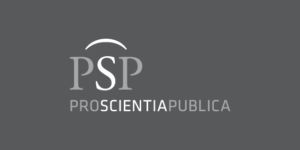Comprehensive Insights into Historical Events: Visual and Verbal Associations of Students in Ukraine, Israel, and Poland
DOI:
https://doi.org/10.15503/jecs2025.2.77.90Keywords:
historical memory, Holocaust, war in Ukraine, war in Israel, military conflicts, associations, cultural influencesAbstract
Aim. This research aims to examine, through a questionnaire using visual and verbal free associations, whether the Holocaust, the war in Ukraine, and the war in Israel are perceived as distinct, unique events or if they merge with other military conflicts in students’ perceptions worldwide.
Methods. A total of 82 students from Ukraine, Israel, and Poland participated in this study. The methodology combined visual and verbal free association tasks, where students responded to a series of photographs depicting the Holocaust, the war in Ukraine, and other conflicts. Demographic data such as academic discipline and cultural background were collected to analyse their influence on students’ perceptions.
Results. The Holocaust is largely perceived as a unique and unparalleled historical event, particularly by students from Israel and Poland, who associate it with themes such as inhumanity, grief, and fear. In contrast, some students view more contemporary conflicts, such as the war in Ukraine and the war in Israel, through a comparative lens, often linking them to broader global conflicts. Ukrainian students tend to see the war in Ukraine as a unique event, while Israeli students show a similar perspective regarding the war in Israel, associating it with themes of chaos, struggle, and survival.
Conclusions. This study highlights the significance of the Holocaust in shaping collective historical memory and emphasises the role of educational and cultural backgrounds in these perceptions. The findings underscore the importance of educational strategies that maintain the distinct historical significance of the Holocaust while fostering empathy and critical thinking, offering valuable insights for educators and policymakers.
Downloads
References
Crane, S. A. (2008). Choosing not to look: Representation, repatriation, and holocaust atrocity photography. History and Theory, 47(3), 309-330. https://doi.org/10.1111/j.1468-2303.2008.00457.x
Fortin, J. (2023). A thousand unspoken words: reading photographs of the Holocaust. In P. R. Bartrop (Ed.), Sources for Studying the Holocaust (pp. 58-74). Routledge. https://doi.org/10.4324/9781003248620-7
Gray, M. (2013). Exploring pupil perceptions of Jews, Jewish identity and the Holocaust. Journal of Modern Jewish Studies, 12(3), 419-435. https://doi.org/10.1080/14725886.2013.832564
Lenga, R. A. (2020). Seeing things differently: The use of atrocity images in teaching about the Holocaust. In S. Foster, A. Pearce, & A. Pettigrew (Eds.), Holocaust Education. Contemporary Challenges and Controversies (pp. 195-220). https://doi.org/10.2307/j.ctv15d7zpf.16
Levin, J., & Uziel, D. (1998). Ordinary men, extraordinary photos. Yad Vashem Studies, 26, 265-293.
Makarychev, A., & Siva, S. (2023). Photography as testimony: Insecurities, “bareness” of life, and resilience during the war in Ukraine. Visual Anthropology, 36(4), 330-347. https://doi.org/10.1080/08949468.2023.2207451
Milton, S. (1999). Photography as evidence of the Holocaust. History of Photography, 23(4), 303-312. https://doi.org/10.1080/03087298.1999.10443338
Struk, J. (1998). Photographs from the Holocaust archive. The Journal of Holocaust Education, 7(3), 87-112. https://doi.org/10.1080/17504902.1998.11087075
Wollaston, I. (2015). The absent, the partial and the iconic in archival photographs of the Holocaust. In H. Ewence & H. Spurling (Eds.), Visualising Jews through the ages. Literary and material representations of Jewishness and Judaism (pp. 281-309). Routledge.
Downloads
Published
Issue
Section
License
Copyright (c) 2025 Nitza Davidovitch, Aleksandra Gerkerova, Katarzyna Thomas

This work is licensed under a Creative Commons Attribution 4.0 International License.
CC-BY
Authors retain copyright and grant the journal right of first publication with the work simultaneously licensed under a Creative Commons Attribution License that allows others to share the work with an acknowledgement of the work's authorship and initial publication in this journal. All authors agree for publishing their email adresses, affiliations and short bio statements with their articles during the submission process.


